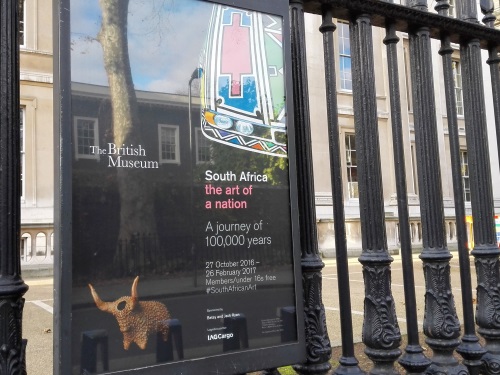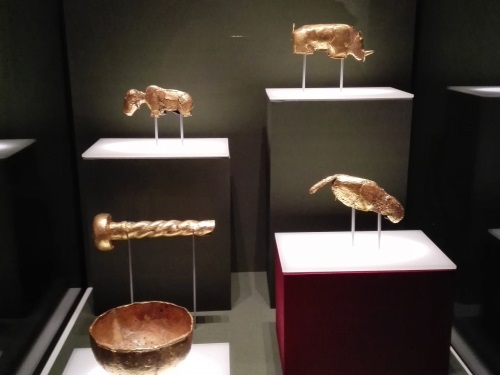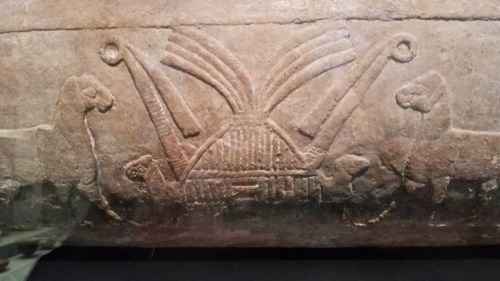Blog Exhibitions
Looking for the Golden Rhino
Last October, when I visited Mapungubwe WHS in South Africa, I got intrigued by the cute small statue of a golden rhino which was found in a grave there. The rhino itself isn’t displayed at the site (a copy is): the original is in possession of a University Museum in Pretoria. Coincidence has it that just now they have lent this golden rhino to the British Museum in London for an exhibition on South African Art. So that’s where I headed yesterday.

I had paid 12.5 EUR beforehand for an entrance slot to the exhibition at the opening hour of 10 a.m. It has received good reviews, so I expect it to be busy all the time. My surprise could not have been bigger when I stood in front of the first display case: it contained the Makapansgat pebble! This is the most curious discovery from one of the other South African WHS, the fossil hominid site of Makapansgat. It is a reddish brown, face shaped pebble, apparently taken ‘home’ by an Australopithecus africanus. It was larger than I had imagined it, about ca. 8 cm in height. I found it so fascinating that I returned for a second look at the end of the exhibition tour.
The golden rhino is just around the corner from the pebble. It is displayed together with a golden oxen and a golden sceptre and bowl, all taken from the grave in Mapungubwe. They do look a bit ‘lonely’ here, and the accompanying text only hints at the history of Mapungubwe. Without the site's context, the value of these golden objects is quickly overlooked. To be fair the exhibition is on South African Art, not History per se (although the objects are clustered chronologically). Still I had expected more from the exhibition: I'd seen it all in 45 minutes, there aren't many objects although most of the ones on display are top-notch.

As I finished rather quickly, I decided to go and see some interesting other exhibits in the British Museum. I used our In the British Museum connection for that. Maybe it would be better if we added the room number where each object can be found, as the museum’s lay-out isn’t entirely logical. I first set my sights on the Uruk Trough, found at the Sumerian site which is part of the Ahwar of Southern Iraq WHS. I walked the entire Near East hallway downstairs, but that’s mainly dedicated to findings from Nimrud and Nineveh (looking at the extent of the items on display here, it’s a miracle that there was something left for ISIS to destroy).
I eventually found the Uruk Trough on the first floor. It is engraved with rams around a reed house, befitting the signature of this WHS. The Meroë findings are also on the first floor, at the far end of the Egyptian corridor where there always is a crowd of visitors because of the sarcophagi on display. The back wall of the corridor is covered with a pieced together interior wall of a tomb in Meroë. On the way I found another one for our connection, a glazed brick guardsman from Susa.

The good thing about the British Museum is that entrance is free, which makes its classy exhibits accessible to people from all over the world that come and visit. It did struck me this time however how much of a warehouse feel it has, it seems to be frozen in time since I visited it for the first time during a school trip almost 30 years ago.
Els - 4 December 2016